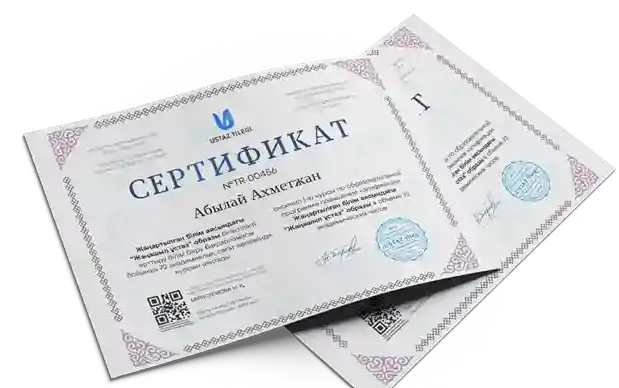Unit of a long term plan: Unit 2. Living things.
| School: №14 |
Date: 23.06.17
| Teacher name: Хожабаева Курултай |
Class: 5
| Number present: 12 | Absent: |
Lesson title: Animals
|
|
| Learning objectives | R2. Understand with little support specific information and detail in short, simple texts on a limited range of general and curricular topics. W3. Write with support factual descriptions at text level which describe people, animals, places and objects S7. Use appropriate subject vocabulary and syntax to talk about a limited range of general topics. C4. Eval |
| Lesson objectives | All learners will be able to understand the topic and talk about animals.Most learners will be able to describe and write the differences of animals.Some learners will be able to use adjectives, verbs correctly and explain their opinions |
| Level of thinking skills | Application |
| Assessment criteria | Use new vocabulary; demonstrate the exact words into correct place.Illustrate the animal types, |
| Language objectives | Read and talk about text, understand the meaning and interesting facts. Key words: domestic, wild, strong, quicklyDiscussion pointsWhat kind of animals do you like?Writing prompts: posrters, pictures |
| Values links |
|
| Cross curricular links | Nature, Society |
Previous learning
5 min | Use the game “Bingo” to the theme plants and trees. All of the leaners write as many words about the theme. After writing, check the words with teacher’s list and compare it, if there are 10 suitable words, you will get “Bingo” |
| Planned timings | Planned timings |
| Start | Plan. I. Organization moment. Teacher greets with the students and check their attendance.II. Divide pupils into 2 groups by giving them 1. Domestic animals2.Wild animalsIII. Brainstorming. In a minute write down as many animals. Compare with partner the written words . IV. Active vocabulary.DomesticWildGhost RarelyTrackProtectSheepAttackEndangeredTask. VJust a minute. Learners take it turns to revise for one minute about the words of the text without repetition, or mistake
| Resources
Active board
Strategy. “Just a Minute” |
| Work with text. Learners see the picture and answer the questions about the animal and what would they like to know about it. Read the text and translate it using vocabulary.A ghost lives high up in the mountains of central Asia. It hides in the forests and usually only comes out at night. People rarely see it, but it leaves tracks in the snow. This isn’t a real ghost. This is the snow leopard, a big cat that they call the “ghost of the mountains”. The snow leopard has thick fur with black spots on its head, body and long tail. Its fur protects it from the freezing cold. Its spots help it hide from its prey. It also has big paws. Snow leopards eat wild sheep and goats. When they attack other animals, they can easily jump up to feet. They are very strong and can kill animals that are three times bigger than them. Luckily for us they rarely attack humans. Sadly the snow leopard is an endangered species. There are now only, 4,080 to 6,590 of them. In Kazakhstan, there are fewer than 200. |
|
| After reading, translating and understanding the text learners complete the chart using information related to the text | VI. Strategy Cluster. |
| Task VI. Differentiation- how do you plan to give more support? How do you plan to challenge the more able learners | Assessment - how are you planning to check leaner’s learning
| Cross curricularPupils give Kazakh equivalents of the words. Tell the rile of animals in society |
| Most support: work with Venn diagram, compare two animalsSome support: answer the questions according to the textMinimal support: tell the whole class about animals which are in danger |
|
|
|
|
|








